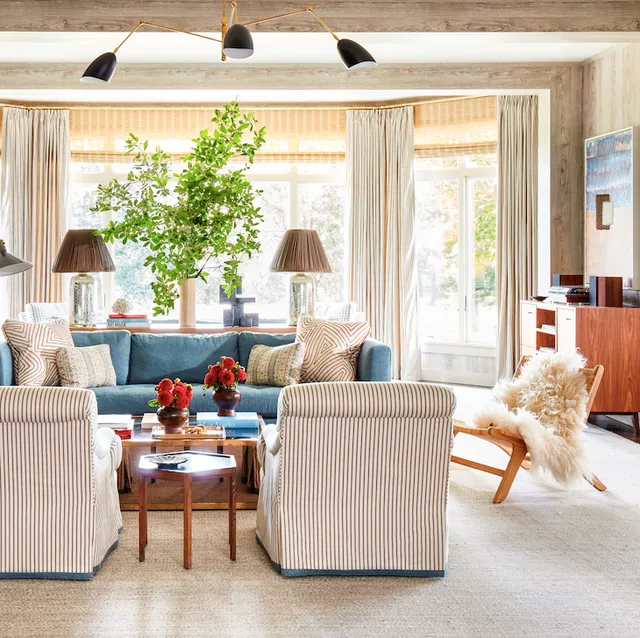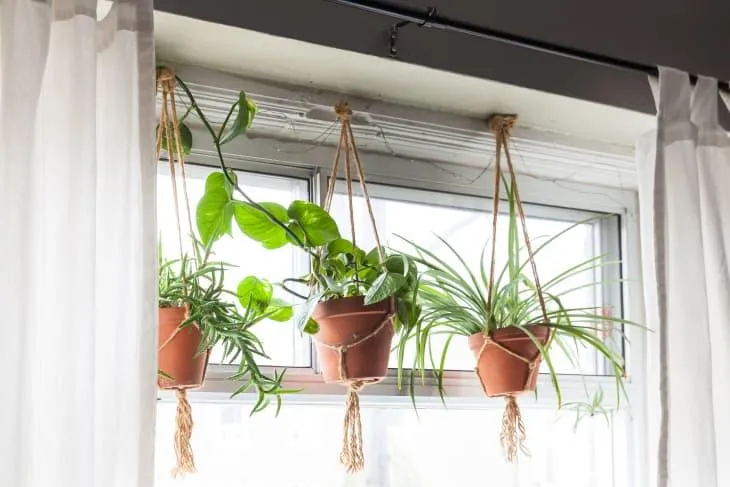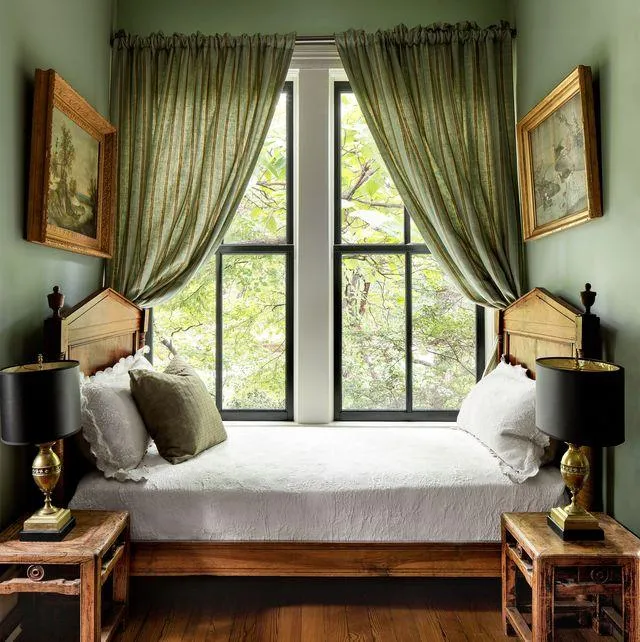The Best Hanging Plants for Drapery and Cascading Beauty
If you’re looking for plants that will trail elegantly over the sides of pots or hang baskets, adding a sense of drama and visual appeal, you’ve come to the right place. As an avid gardener, I’ve tried my hand at numerous climbing and trailing indoor plants over the years, finding some to be more success stories than others. In this article, I’ll outline some top choices for plants that will drape down beautifully, based on my own hit-or-miss experiences as well as horticultural expertise.
English Ivy
One of the most popular choices for a hanging plant with dramatic drape is English ivy (Hedera helix). Known for its ability to climb almost any vertical surface, this evergreen vine thrives when planted in hanging baskets or pots and allowed to trail over the edges. From my experience, English ivy is virtually foolproof – it’s hardy, tolerant of low light, and a fast grower. Its dark green, three-lobed leaves take on beautiful shades of gold, yellow, and burgundy in fall. English ivy makes an excellent choice for trailing indoors along bookshelves, over mantels, or out of hanging baskets.
Pothos
An ever-reliable trailer, pothos or devil’s ivy (Epipremnum aureum) ranks high on lists of low-maintenance indoor plants. Its oval, deep green leaves emerge in a pleasant variegated pattern, ranging from creamy white to bright yellow. Pothos is very forgiving of neglect, thriving in low-light conditions where other plants would fail. It grows quickly to cascade beautifully over the sides of any container. Its hardiness and carefree nature make pothos an excellent pick for beginner plant parents or those with a busy schedule. Just water occasionally and watch it flourish!
Swedish Ivy
With delicate, lacy foliage resembling fine lace, Swedish ivy (Plectranthus verticillatus) makes a lovely addition for hanging baskets and shelves. Its leaves emerge chartreuse before developing intricate white veining. Swedish ivy grows rapidly in warm conditions, forming lush drapes. It prefers bright, indirect sunlight. While prone to occasional powdery mildew in low-ventilation areas, Swedish ivy bounces back easily with an organic fungicide spray. Overall, this sweet-looking ivy brings lovely texture and visual appeal.
Heartleaf Philodendron
With its heart-shaped leaves that emerge glossy green with flashes of cream and gray, heartleaf philodendron (Philodendron hederaceum) is a graceful vining plant. It brings lovely foliage interest while thriving in a variety of conditions from low-light shelves to hanging pots in medium sun. Though a slow starter from a young cutting, heartleaf philodendron will grow vigorously over time, forming a full, bushy tail that looks amazing cascading over the edges of suspended containers. Water only when the soil becomes dry. This philodendron makes a superb hanging plant selection.

Wandering Jew
Perhaps the hardiest of all indoor trailing plants is the wandering Jew (Tradescantia zebrina). Its crisply variegated oval leaves come in shades ranging from pale pinkish-purple, silvery blush, to deep green with shades of mauve and pink. Often recommended for beginners due to its resilience, wandering Jew tolerates bright light, moderate water, and survives neglect better than most. Allowed to trail, it forms lush sheets of color perfect for hanging pots, windowsills, or as a groundcover. Its adaptability and lovely foliage make wandering Jew a top choice for low-maintenance beauty.
English Spiderwort
For a trailing bloomer, consider English spiderwort (Tradescantia pallida ‘Purpurea’). In spring and summer, this vining plant erupts in dainty lilac-blue flowers that resemble small spiders suspended on filaments. As it trails gracefully, English spiderwort provides a nice pop of floral color. Its triangular leaves emerge greenish-blue, often tinged with purple hues. A sun-lover, this spiderwort thrives while cascading from hanging pots on porches or decks. Deadhead spent flowers to encourage reblooming. The unique flowers make this a great choice for anyone seeking blooms amidst the trailing greenery.
String of Hearts
For a trailing plant with visual interest all year, try string of hearts or Rosary vine (Ceropegia woodii). Bearing flattened oval leaves in stacked strings resembling oblong beads, this charmer forms lacy drapes perfect for hanging pots. In spring and summer, its delicate heart-shaped blooms called lanterns emerge in shades of pink and white, dangling among the foliage like jewels. This string-bean vine tolerates a range of conditions from partial sun indoors to bright filtered light. Though prone to drying if soils become too parched, string of hearts bounces back easily with consistent moisture – a worthwhile pick for its lively appeal.
Tips for Growing Hanging Plants
Now that you’re acquainted with some top trailing plant choices, here are a few tips to help your hanging plants thrive:
- Start with healthy cuttings, young plants, or rooted divisions from established specimens.
- Use well-draining potting mix formulated for hanging baskets in containers with drainage holes.
- Water thoroughly whenever the top inch of soil becomes dry, allowing the soil to dry somewhat between waterings.
- Fertilize every few weeks during the growing season with a diluted liquid houseplant food.
- Prune leggy growth and trim trailing vines to shape and control size occasionally.
- Provide adequate light. Most trailing plants prefer bright, filtered sun but tolerate shade with slower growth.
- Allow low branches to cascade over the pot edges for a fuller, dramatic effect.
- Repot annually in spring if plants become pot bound, disturbing roots minimaly.
- Bring plants indoors before first fall frost for overwintering as houseplants.
With a little TLC following these guidelines, you’re sure to enjoy long-lasting beauty from hanging plants. Their trailing habit adds grace, texture, and visual appeal to any space. From brightening up kitchens and living rooms to adorning porches and patios, flowering or foliar trailing plants provide lovely décor for months on end. Now get out there and try your hand at some longer recommendations – you’ll be dazzled by the results!

I hope this article has answered your questions and given you some great plant options to consider for dramatic trailing effects. Feel free to experiment – not every plant works for every space, so see which thrive best for your conditions. Gardening is part science, part artistic expression. Most of all, enjoy the journey of planting and watching your hanging plants take shape! Let me know if any other questions arise in your plant journeys. Happy growing!
Choosing the Perfect Hanging Plant
| Plant | Care Level | Light Needs | Ideal Location |
|---|---|---|---|
| Pothos | Low | Low to Medium | Any indoor space |
| English Ivy | Low | Low to Medium | Any room |
| Philodendron | Low | Low to Bright Indirect | Any indoor space |
| Tradescantia | Low | Bright Indirect | Any room with indirect light |
| Spider Plant | Low | Low to Bright Indirect | Any room |
FAQ
-
What kinds of plants drape down?
There are several varieties of plants that basically hang down or trail along the ground, kinda like vines. Some common draping plants contain ivy, pothos, english ivy, wandering dude, and spider plants. At the same time, certain types of flowering plants also drape down including begonias, impatiens, and fuchsia.
-
How far do draping plants grow?
Draping houseplants can reach amazing lengths depending on what type you get. Pothos for example may grow several feet long if conditions are perfect. English ivy is known to possibly extend over 10 feet downwards from a hanging basket with time. However, the distance a trailing plant grows partly relies on how much room and sunlight it receives. Perhaps give it a few months to get an idea of maximal growth for your condition.
-
What is the best way to care for draping plants?
To keep draping plants healthy, make sure the soil stays moist by watering when the top inch becomes dry. Also, rotating the pot weekly helps equal light exposure. Consider staking or trellising fast growers to train them along a frame. In addition, pruning leggy stems encourages bushier appearance. Basically, give them decent lighting and fertilize occasionally to optimize theirtrailing tendencies. Does anyone have experience with particular draping plants? I’m always looking to expand my collection!

-
How do I get a plant to drape naturally?
It is sometimes tricky to get certain plants to drape down organically instead of just growing straight up. Strangely enough, depriving it of sunlight slightly might encourage it to stretch downward seeking the light. You could try rotating the pot daily to stimulus all sides equally. Also, gently weighting sections with small stones may train stems in the desired direction. On the other hand, just have patience – many draping varieties will start to cascade after reaching a certain size. Perhaps experiment with stakes or cloth guiding to influence the look you want.
-
Are draping plants good for indoor decor?
Yes, I think draping plants can add beautiful visual interest as indoor decor. Their long vines and foliage spilling over the sides of hanging pots or shelves produce impressive texture. At the same time, placing them near windows allows their lush forms to essentially act as living curtains. Despite smaller spaces, drapers allow nature to quietly spill into interior settings. Studies even show gardens and greenery aid concentration and mood indoors. So in summary – draping varieties seem like amazing additions for decorating and ambiance between four walls.
-
When shouldn’t someone get a trailing plant?
There are a few cases when a draping plant may not work well for a home. For instance, if you have curious pets or toddlers roaming around, the long strands could be a choking hazard if chewed on. Also, some trailing types like English ivy are poisonous if consumed. On the other hand, very messy drippers may not suit neat-freaks or anybody with difficult clean-up. Lastly, consider how much maintenance is reasonable – fast growers demand more vigilance. So unless you have the space, time and lifestyle for one, it may not be worth getting a plant that droops downwards.
-
What are some alternatives to draping houseplants?
If lengthy vines and drapey forms aren’t your thing, no worries – there exist many other beautiful compact indoor plants to choose from. Bushy ferns, cute succulents, flowering orchids and tropicals with upright leaves offer visually appealing options. For major impact, try grouping various small-to-medium plants in one decorative container. Basically any plants matching your area’s light and water conditions could potentially work. But is diversity important to you too? Mixing shapes and textures adds interest – so perhaps look into alternative styles before settling on a plant type.
-
In summary, what are the pros of draping plants?
To conclude, draping indoor plants obviously have some neat pros worth considering. Their winding stems and cascading greenery help beautify large and small spaces alike. Also, trailing varieties essentially serve as natural room dividers or privacy screens between areas. In addition, hovering leaves filter sunlight and offer glance-catching ambient shadows. Lastly, their lively aesthetic basically lifts mood and provides calming visual interest – so that’s definitely a major advantage. In light of this, maybe it’s time to give trailing plants a try! Let me know if you decide to add one to your collection.

